Understanding Cement Bollards
Definition and Purpose – Overview of what cement bollards are and their primary functions
In the shadowed corners of urban landscapes, cement bollards stand as silent sentinels—guardians forged from concrete, yet imbued with purpose. These unassuming structures serve as the backbone of safety, demarcating boundaries with a stoic resilience that whispers of permanence. Their primary function is to prevent unauthorized vehicle access, acting as a barrier between chaos and order, especially in bustling cityscapes or delicate heritage sites.
Crafted from reinforced concrete, cement bollards are designed to withstand the relentless march of time and the brutal force of impact. They are not just functional; they are a statement—an assertion of control in a world teetering on the edge of unpredictability. Whether embedded to protect pedestrians or to secure sensitive infrastructure, cement bollards embody a quiet authority that commands respect without uttering a word.
Types of Cement Bollards – Different styles, sizes, and designs available
When it comes to cement bollards, variety truly is the spice of life. These sturdy structures come in an array of styles, sizes, and designs, each tailored to serve specific needs while blending seamlessly into their surroundings. Whether you’re looking for a sleek, modern look or something more traditional, there’s a cement bollard that fits the bill perfectly. The diversity in design ensures that every project, from urban streets to heritage sites, can benefit from the right type of bollard.
Some popular types include modular bollards, which can be easily relocated or reconfigured, and fixed bollards, designed for long-term security. For aesthetic appeal, decorative cement bollards feature intricate patterns or custom finishes that add character to a space without sacrificing durability. In high-traffic areas, heavier, reinforced models provide maximum impact resistance, safeguarding pedestrians and infrastructure alike.
To give a clearer picture, here are some common styles of cement bollards:
- Standard round bollards – simple, versatile, and highly effective.
- Illuminated bollards – equipped with lighting to enhance visibility at night.
- Decorative bollards – crafted with unique textures or artistic elements.
- Retractable bollards – adaptable options that can be lowered or raised as needed.
Each style offers a unique blend of form and function, proving that cement bollards aren’t just about security—they’re about making a statement while protecting what’s valuable. Their presence, whether imposing or subtle, speaks of resilience, craftsmanship, and purpose, standing firm against the test of time and traffic.
Materials and Construction – Details about construction materials and durability features
Cement bollards are more than just concrete barriers; they are a testament to durability and craftsmanship. Crafted from high-quality materials, these bollards are designed to withstand the harshest environmental conditions found across South Africa. The core of their resilience lies in their construction materials, which include reinforced concrete blends that combine cement, aggregate, and water to form a robust matrix. This composition ensures that cement bollards maintain their strength over decades, resisting cracking, chipping, and erosion even after years of exposure to sun, rain, and traffic.
Another critical aspect is their construction process, which often involves steel reinforcement bars (rebar) embedded within the concrete. This reinforcement adds tensile strength, preventing structural failure under impact or heavy loads. The durability features of cement bollards are further enhanced by surface treatments such as sealants or protective coatings, making them ideal for both urban streets and industrial environments. Whether used as delineators or security barriers, these bollards speak to a blend of resilience and aesthetic appeal that’s hard to match.
Advantages of Using Cement Bollards
Strength and Durability – Why cement bollards are highly resilient
When it comes to safeguarding urban landscapes, few solutions rival the robustness of cement bollards. These unassuming guardians are crafted to withstand the relentless assault of time, weather, and the occasional vehicular misadventure. Their strength isn’t just a matter of brute force but a testament to meticulous construction and quality materials—making them an excellent choice for high-traffic areas in South Africa where durability is non-negotiable.
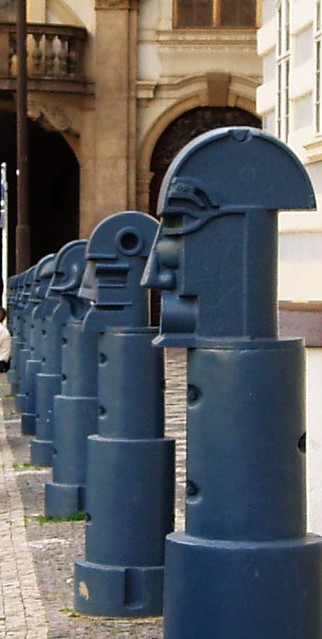
What truly sets cement bollards apart is their resilience. Unlike other barriers that may crumble under pressure, cement bollards are engineered to endure. Their innate durability means they resist cracking, chipping, and erosion, even in the face of harsh environmental conditions. This unwavering strength ensures long-term performance and minimal maintenance, saving resources and effort in the long run.
To illustrate, consider the following advantages:
- Exceptional resistance to impact and natural elements.
- Low maintenance requirements, translating into cost-effectiveness.
- Ability to be customized without compromising their structural integrity.
Indeed, cement bollards are more than mere posts—they are stalwart sentinels, designed to uphold safety and order with a quiet, unyielding resolve. Their resilience makes them a preferred choice for both urban planning and private property security across South Africa, where durability is often the deciding factor in infrastructure investments.
Cost-Effectiveness – Affordability over the long term
In a landscape where safety and longevity are paramount, cement bollards stand out as a truly cost-effective solution. Their initial investment might appear modest, but the long-term savings are remarkable. Unlike their metal or plastic counterparts, cement bollards require minimal maintenance, which translates into lower ongoing expenses. They resist the wear and tear of South Africa’s diverse climate—be it scorching sun, heavy rain, or corrosive coastal air—meaning fewer repairs and replacements over time.
Furthermore, cement bollards are incredibly versatile. They can be customized to suit specific aesthetic or security needs without compromising their durability. This adaptability ensures that property owners and urban planners get the most value for their money. To put it simply, choosing cement bollards is a smart decision—one that delivers enduring protection and peace of mind, all while respecting tight budgets. Their affordability over the long term makes them an investment in safety that truly pays off.
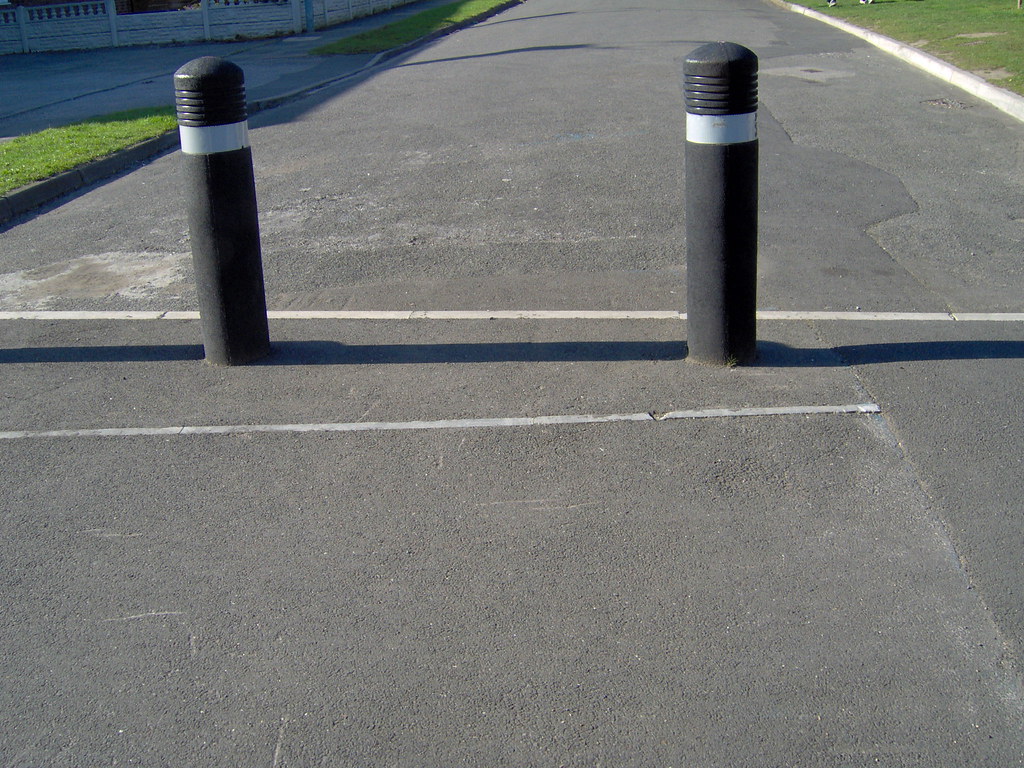
Aesthetic Appeal – Customizable designs to match surroundings
In a world shrouded in shadows and steel, the allure of cement bollards lies not only in their resilience but in their uncanny ability to blend into the tapestry of urban landscapes. Their aesthetic appeal is a silent testament to craftsmanship—designed to mirror the very soul of their surroundings. Customizable to match the hues, textures, and motifs of any environment, cement bollards transcend mere functionality, becoming part of the scenery itself.
With a palette that ranges from rustic earth tones to sleek modern finishes, they can be tailored to evoke tradition or embrace contemporary elegance. Whether nestled along bustling city streets or guarding tranquil parks, their adaptability ensures they serve both security and style. The versatility of cement bollards transforms them from utilitarian barriers into poetic expressions of design—a rare combination that elevates safety without sacrificing beauty.
Environmental Benefits – Eco-friendly options and sustainability
In a world increasingly conscious of environmental impact, cement bollards stand out as champions of sustainability. Their eco-friendly nature stems from the fact that they are primarily composed of locally sourced, natural materials—reducing reliance on energy-intensive manufacturing processes. This makes cement bollards an ideal choice for projects seeking to balance safety with ecological responsibility.
Moreover, their durability means they require minimal maintenance and replacement, significantly cutting down on waste and resource consumption over time. Their longevity ensures a smaller carbon footprint, aligning perfectly with the growing demand for sustainable urban solutions.
- Recyclability: Cement bollards can often be repurposed or recycled at the end of their lifespan, further reducing environmental impact.
Choosing cement bollards not only enhances security and aesthetic appeal but also contributes to a greener, healthier environment—an essential consideration for modern cities in South Africa striving for sustainable development. Their eco-friendly profile turns a simple barrier into a statement of environmental stewardship, embodying progress and conscientious design.
Typical Applications of Cement Bollards
Traffic Management – Controlling vehicle access and ensuring safety
In the intricate dance of urban safety, cement bollards serve as silent sentinels—guardians of order and protectors of human life. Their role in traffic management is not merely functional but profoundly consequential, shaping the flow of vehicles and pedestrians alike. These sturdy structures anchor environments, creating a tactile boundary that commands respect without confrontation.
Typical applications of cement bollards in traffic management reveal a deeper purpose—preventing vehicle intrusion into pedestrian zones, safeguarding vital infrastructure, and delineating restricted areas. They stand firm against the tumult of daily life, enduring weather and wear with unwavering resilience. In South Africa’s bustling cities, where chaos and order often collide, cement bollards become a moral compass—guiding vehicles away from danger and ensuring safety for all.
In many settings, their presence is understated yet essential. From city centers to private parking lots, cement bollards quietly enforce boundaries. Their ability to be customized in design and finish allows them to seamlessly blend into diverse environments, turning utilitarian security into a statement of care. Here, the purpose transcends mere traffic control; it becomes an act of moral responsibility—protecting lives with steadfast resolve.
Pedestrian Zones – Protecting walkways and public spaces
In the bustling heart of South Africa’s urban landscape, pedestrian zones act as sanctuaries amid the chaos—an oasis where foot traffic reigns supreme. Cement bollards are the unassuming heroes of these safe havens, meticulously guarding walkways and public spaces from unwelcome vehicle intrusion. Their presence is a subtle yet powerful assertion: this space is for pedestrians, not for reckless drivers eager to test their metal (or cement).
From city centers to park corridors, cement bollards serve as a tactile barrier—robust enough to withstand the tumult of daily life yet unobtrusive enough to preserve aesthetic harmony. Some installations feature sleek, modern finishes, seamlessly blending into the environment, while others sport bold, unmistakable designs that shout “stay out!” to wayward vehicles. These sturdy sentinels not only enhance safety but also contribute to the overall visual narrative of the space.
In areas where pedestrian safety is paramount, cement bollards often come with additional features:
- Removable or retractable options for event management
- Customized heights and finishes to match the surroundings
- Integrated lighting or reflective elements for visibility at night
Ultimately, cement bollards in pedestrian zones are a testament to thoughtful urban planning—combining practicality with style, all while quietly ensuring that pedestrians can stroll with peace of mind. Their strategic placement transforms busy streets into safe havens, showcasing the perfect marriage of function and finesse in South Africa’s vibrant cities.
Building Security – Preventing vehicle intrusions into sensitive areas
Cement bollards are the steadfast guardians of building security, standing firm against potential vehicle intrusions into sensitive areas. In South Africa’s bustling urban environments, where safety and protection are paramount, these concrete sentinels serve as an unyielding barrier that deters unauthorized access. Whether shielding government buildings, private estates, or commercial complexes, cement bollards provide a tangible line of defense that is both durable and reliable.
Strategic placement of cement bollards can effectively prevent vehicle ramming attacks and accidental collisions. Their robust construction ensures they withstand impact, preserving the integrity of secure zones. For heightened control, many installations incorporate features such as:
- Removable or retractable mechanisms for flexible access
- High-visibility reflective coatings for night-time security
- Customized heights and finishes to match the surrounding architecture
In the context of building security, cement bollards are more than mere barricades; they are an essential element of a comprehensive safety strategy. Their resilience and versatility make them indispensable in safeguarding critical infrastructure and ensuring peace of mind in South Africa’s dynamic urban landscape.
Urban Infrastructure – Use in parks, roads, and commercial areas
In South Africa’s vibrant urban tapestry, the strategic deployment of cement bollards transforms functional spaces into fortified zones of safety and order. These unassuming yet formidable structures find their place in a myriad of applications, seamlessly blending utility with urban aesthetics. Parks, bustling streets, and commercial precincts benefit immensely from the presence of cement bollards, which serve as guardians of pedestrian sanctuaries and vehicle-free zones.
In high-traffic areas such as city centers and shopping districts, cement bollards effectively delineate pathways, prevent accidental encroachments, and regulate vehicle flow. Their versatility is exemplified by designs that range from sleek, minimalist options to robust, impact-resistant forms.
- Public parks
- Pedestrian walkways
- Commercial plazas
Each application highlights the importance of these concrete sentinels in maintaining order amid urban chaos.
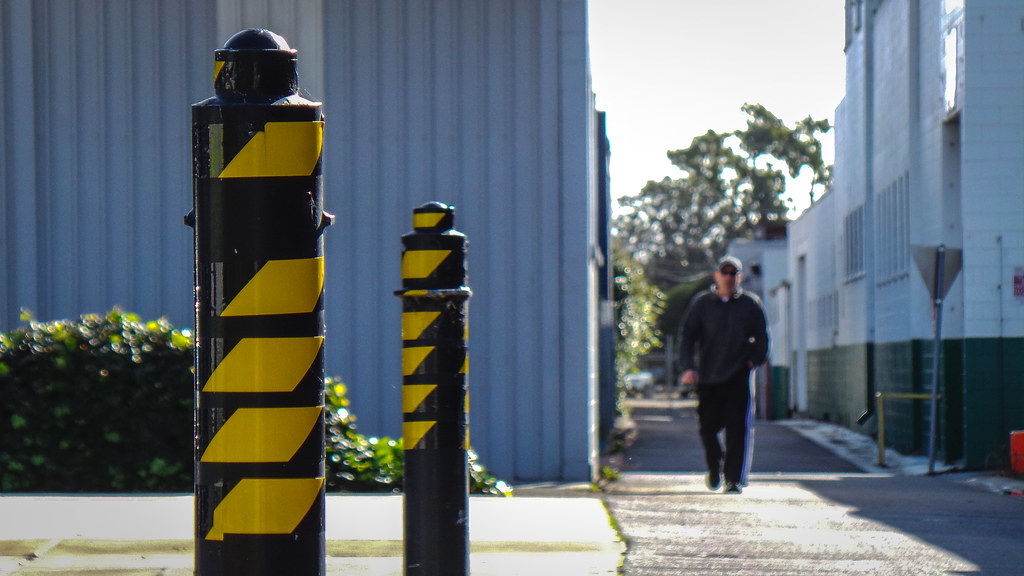
Moreover, the adaptability of cement bollards allows for creative customization—whether adding reflective coatings for nighttime visibility or incorporating decorative finishes to enhance aesthetic appeal. Their strategic placement not only elevates the safety of pedestrians and motorists but also underscores a commitment to sustainable urban development, making cement bollards an indispensable element in South Africa’s evolving cityscape.
Design Considerations for Cement Bollards
Size and Height – Choosing the appropriate dimensions
When selecting the perfect cement bollards for your space, size and height are not mere numbers—they are the very heartbeat of safety and aesthetic harmony. An ill-chosen dimension can either diminish the impact of your security measures or overshadow the visual flow of your environment. In South Africa’s diverse urban tapestry, the dimensions of cement bollards must balance strength with subtlety, creating a seamless blend of protection and design.
Optimal height often lies between 600mm and 900mm, ensuring visibility without overpowering the surroundings. The diameter typically ranges from 150mm to 300mm, providing enough mass to withstand vehicular impact while maintaining elegance. For high-traffic zones or critical security points, taller and more robust cement bollards are advisable, offering a commanding presence that deters unwelcome intrusion. Conversely, in pedestrian zones, shorter models preserve openness while still offering robust protection.
Consider these key factors when choosing dimensions:
- Functional safety requirements
- Environmental integration
- Visual harmony with existing infrastructure
Color and Finish – Enhancing visual integration with surroundings
When it comes to cement bollards, their visual impact hinges on thoughtful design choices—especially color and finish. A well-selected hue can seamlessly blend bollards into their surroundings or serve as a striking contrast that commands attention. In South Africa’s vibrant urban landscape, balancing aesthetic appeal with functional purpose is crucial. The finish, whether smooth or textured, adds depth and character, transforming a simple security feature into a design statement.
To enhance visual integration, consider using natural tones like greys, browns, or earthy shades that mirror the environment. For areas requiring high visibility, bold colors such as yellow or red can act as effective deterrents without compromising style. Some environments benefit from customized finishes—like polished or matte surfaces—that complement existing architecture and landscape design.
Incorporating these design elements not only elevates the aesthetic of your space but also reinforces the purpose of your cement bollards—creating a harmonious balance between safety and visual appeal in every corner of South Africa’s urban fabric.
Mobility and Accessibility – Options for removable or fixed bollards
In the bustling streets and serene parks of South Africa, the choice between removable and fixed cement bollards can transform the flow of urban life. While fixed bollards provide unwavering security, removable options offer flexibility for events or emergency access. The decision hinges on the specific needs of the space—balancing safety with convenience.
Consider the environment and the level of accessibility required. Removable cement bollards are perfect for areas where pedestrian movement or vehicle access fluctuates. Their design often incorporates a discreet lock or mechanism, blending seamlessly into the surroundings when not in use. Conversely, fixed bollards are sturdy stalwarts—permanently embedded to withstand relentless forces and deter unwanted intrusion.
For dynamic urban settings, a hybrid approach might be ideal, utilizing removable bollards in high-traffic zones and fixed options where permanent security is paramount. This versatility ensures that the space remains welcoming yet protected. Ultimately, selecting the right type of cement bollard involves assessing the balance between aesthetic harmony, safety, and operational practicality—an art mastered by many South African municipalities and private sectors alike.
Lighting and Visibility – Integration of reflective or illuminated features
Lighting and visibility are often overlooked in the design of cement bollards, yet they play a crucial role in urban safety and aesthetics. Well-integrated reflective or illuminated features can dramatically enhance the functionality of these structures, especially after sunset or during low-light conditions. Proper lighting not only guides pedestrians but also alerts drivers, reducing accidents and improving overall traffic flow.
In South Africa’s diverse environments—from busy city streets to tranquil parks—visibility is paramount. Incorporating reflective strips or luminescent coatings on cement bollards ensures they stand out without compromising design. For added safety, some designs feature embedded LED lights, which can be switched on during specific hours or events, providing flexibility for different scenarios.
- Choose weather-resistant lighting options that can withstand South Africa’s varied climate.
- Opt for subtle yet effective illumination to maintain aesthetic harmony with the surroundings.
- Ensure reflective surfaces are positioned to catch headlights from multiple angles for maximum visibility.
This strategic integration of lighting and reflective features transforms simple cement bollards into vital urban fixtures—combining safety, functionality, and visual appeal in one seamless package. When thoughtfully designed, these bollards do more than protect—they communicate and guide, making urban spaces safer and more inviting for all users.
Installation and Maintenance
Installation Methods – Professional installation vs DIY considerations
In the labyrinth of urban resilience, the installation of cement bollards stands as a silent sentinel against chaos. Yet, the method of installation can transform a simple barrier into a fortress or a fleeting illusion of safety. For those who seek the unyielding strength of cement bollards, the choice between professional installation and a DIY approach often determines their longevity and effectiveness.
Professional installation ensures that each cement bollard is anchored with precision, often utilizing reinforced foundations and strategic positioning to withstand the relentless passage of time and force. These experts bring experience and an eye for detail, reducing risks of misalignment or weak points that could compromise security. Conversely, a DIY installation might seem tempting—cost-effective and straightforward—but it demands meticulous preparation and skills that are not always apparent at first glance.
For the ambitious handyperson, consider the following steps:
- Excavate and prepare the site, ensuring a solid base.
- Pour a reinforced concrete footing tailored to the specific weight and size of the cement bollards.
- Carefully position each bollard, ensuring alignment and stability.
- Allow sufficient curing time before subjecting the bollards to environmental stressors.
Whether opting for professional expertise or a determined DIY effort, regular maintenance is essential—cleaning, inspecting for cracks, and ensuring proper anchoring to preserve the formidable presence of cement bollards in safeguarding urban spaces.
Maintenance Tips – Cleaning, repairs, and longevity care
In the bustling corridors of urban resilience, cement bollards are the unsung heroes quietly guarding our shared spaces. Yet, their true prowess isn’t merely in their formidable presence but in the meticulous care they receive—both during installation and throughout their lifespan. When it comes to maintaining these guardians of safety, a dedicated approach can significantly extend their longevity and effectiveness.
Cleaning cement bollards regularly with gentle, non-abrasive solutions helps preserve their aesthetic appeal and prevents the buildup of grime that can compromise their visibility. For minor cracks or chips, prompt repairs are essential to prevent deterioration. An effective way to ensure their durability is to periodically inspect the anchoring points and foundational integrity, especially after harsh weather events common in South Africa. To streamline maintenance, consider establishing a routine that includes:
- Visual inspections for cracks or signs of wear
- Cleaning with mild detergent and water
- Timely repairs using appropriate cement or epoxy fillers
- Reapplication of protective sealants to resist environmental damage
By dedicating attention to these simple yet vital steps, cement bollards remain steadfast in their role—whether safeguarding pedestrian zones or controlling vehicle access. Remember, an ounce of preventative maintenance is worth a pound of costly replacements, ensuring these silent sentinels continue to serve their purpose with unwavering strength and resilience.
Safety Standards and Regulations – Compliance requirements for public safety
In the realm of urban infrastructure, adherence to installation and maintenance safety standards for cement bollards is not just a regulatory requirement—it’s a moral imperative. Proper installation ensures that these resilient barriers fulfill their role in safeguarding pedestrians, vehicles, and sensitive facilities. Compliance with local regulations, such as South Africa’s safety codes, guarantees that cement bollards are positioned securely and can withstand environmental stresses over time.
Ensuring safety also involves routine inspections to detect potential issues early. A structured approach might include an
- assessment of anchoring systems
- verification of structural integrity
- adherence to height and placement guidelines
established by safety standards. These measures help prevent accidents caused by unstable or poorly installed bollards, which could otherwise compromise public safety. When installing cement bollards, it’s essential to engage qualified professionals familiar with the specific requirements of South African urban environments. This not only guarantees legal compliance but also optimizes the longevity and effectiveness of these vital safety fixtures.
Choosing the Right Cement Bollards Provider
Factors to Consider – Experience, customization options, delivery
Choosing the right cement bollards provider can significantly impact the durability, safety, and aesthetic appeal of your project. Experience is paramount; a seasoned supplier understands the nuances of material quality, installation techniques, and long-term maintenance, ensuring your investment withstands South Africa’s diverse climate.
Customization options are equally vital. Whether you require sleek, modern designs or more robust, utilitarian styles, a provider offering tailored solutions will meet your specific needs. For instance, some companies provide options for removable cement bollards, enhancing accessibility while maintaining security.
Delivery logistics also play a crucial role—timely and reliable delivery ensures your project timeline stays on track. When selecting a supplier, consider their ability to handle large orders efficiently, especially for urban infrastructure or public safety applications.
Ultimately, partnering with a reputable provider that combines expertise, flexibility, and dependable delivery guarantees that your cement bollards will serve their purpose beautifully and reliably.
Quality Assurance – Certifications and material standards
In a landscape saturated with options, choosing a reputable provider for cement bollards is not merely a matter of procurement but an investment in safety, longevity, and compliance. The backbone of this decision hinges on rigorous quality assurance, underscored by adherence to certified material standards. When a supplier’s credentials reflect ISO certifications or local industry standards, confidence in the durability and safety of your cement bollards is assured. These standards serve as a silent testament to the meticulous processes underpinning each product, ensuring they withstand South Africa’s capricious climate with unwavering resilience.
Beyond certifications, the composition of the materials used in manufacturing cement bollards reveals much about longevity and performance. Premium aggregates, high-quality cement, and reinforcement elements are vital components that bolster strength and resistance to environmental stressors. Reputable providers often showcase their commitment through transparent documentation and compliance with environmental and safety regulations. For projects demanding bespoke solutions, selecting a supplier that can demonstrate a track record of consistent quality and adherence to industry standards guarantees that your investment remains steadfast over time.
Customer Support – After-sales services and warranties
Choosing the right supplier for cement bollards transcends mere procurement; it is an act of safeguarding infrastructure and ensuring long-term resilience. An often-overlooked facet of this decision is the quality of customer support—an essential pillar that sustains the integrity of your investment. Reputable providers recognize that after-sales services and warranties are not just add-ons but vital assurances of durability and performance. They demonstrate a commitment to client satisfaction through prompt responses, expert guidance, and comprehensive maintenance options.
Opting for a supplier with a proven track record in delivering exceptional customer support ensures your project remains on course, regardless of unforeseen challenges. An extensive warranty provides peace of mind, reflecting confidence in the manufacturing standards of their cement bollards. When choosing a provider, look for those that offer tailored solutions, transparent communication, and ongoing assistance—elements that transform a simple transaction into a partnership rooted in trust and reliability.
To further enhance your decision-making process, consider engaging with suppliers that provide detailed after-sales documentation and clear service-level agreements. These not only affirm their commitment but also facilitate smoother installation, maintenance, and eventual upgrades. The right partner understands that cement bollards are more than static security fixtures—they are integral to safety, aesthetics, and urban sustainability, demanding unwavering support throughout their lifespan.
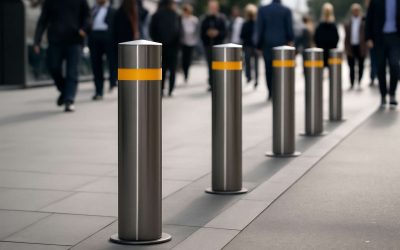
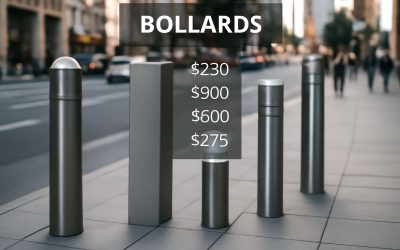
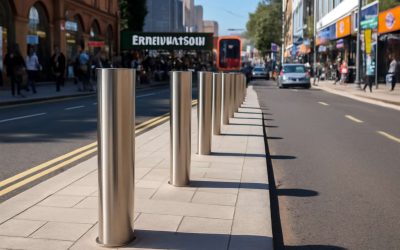
0 Comments